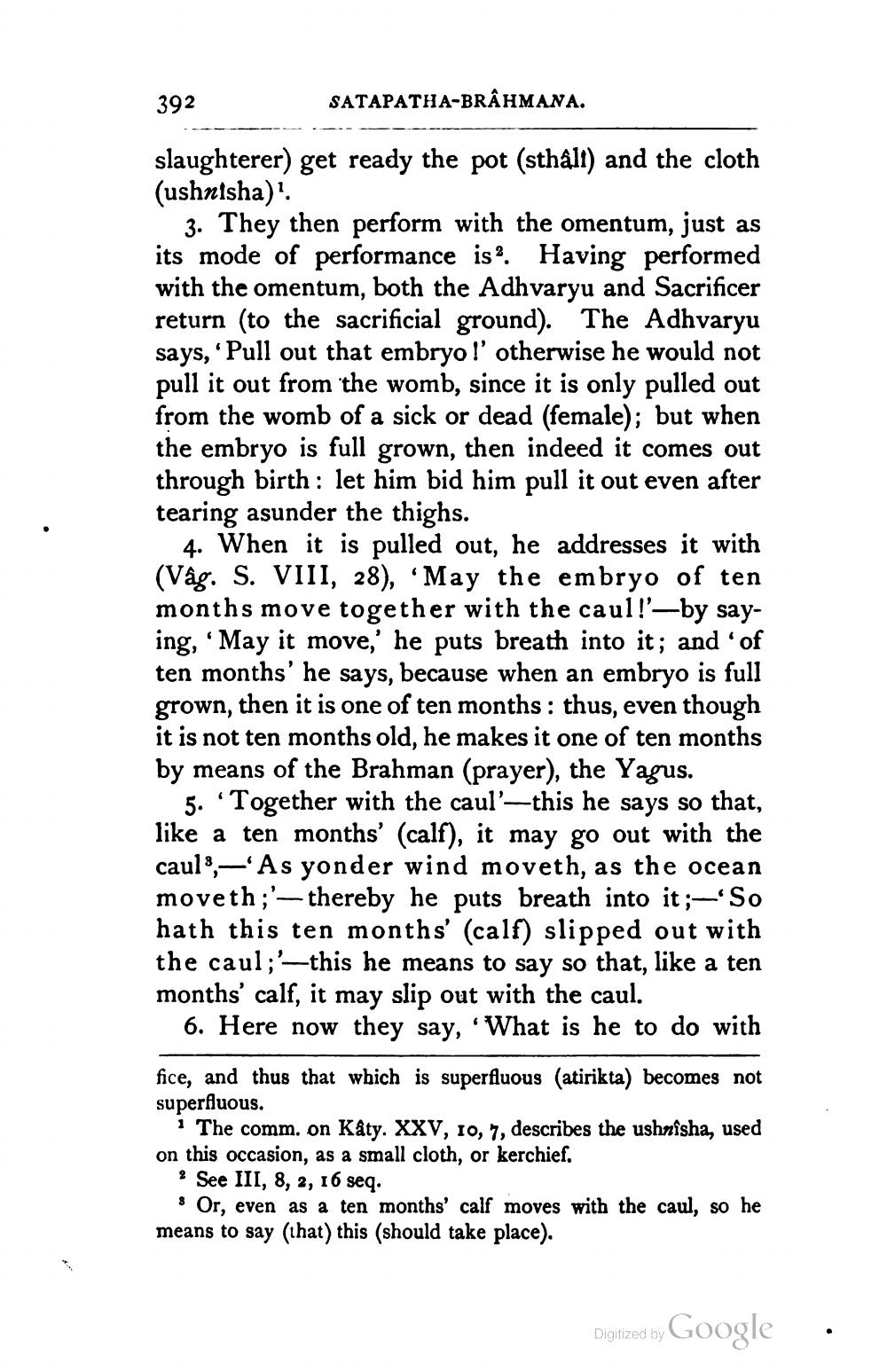________________
392
SATAPATHA-BRAHMANA.
slaughterer) get ready the pot (sthåll) and the cloth (ushntsha)?
3. They then perform with the omentum, just as its mode of performance is. Having performed with the omentum, both the Adhvaryu and Sacrificer return to the sacrificial ground). The Adhvaryu says, 'Pull out that embryo l' otherwise he would not pull it out from the womb, since it is only pulled out from the womb of a sick or dead (female); but when the embryo is full grown, then indeed it comes out through birth : let him bid him pull it out even after tearing asunder the thighs.
4. When it is pulled out, he addresses it with (Vág. S. VIII, 28), "May the embryo of ten months move together with the caul!'—by saying, 'May it move,' he puts breath into it; and of ten months' he says, because when an embryo is full grown, then it is one of ten months: thus, even though it is not ten months old, he makes it one of ten months by means of the Brahman (prayer), the Yagus.
5. 'Together with the caul'—this he says so that, like a ten months' (calf), it may go out with the cauls,— As yonder wind moveth, as the ocean moveth;'— thereby he puts breath into it;— So hath this ten months' (calf) slipped out with the caul;'—this he means to say so that, like a ten months' calf, it may slip out with the caul.
6. Here now they say, "What is he to do with
fice, and thus that which is superfluous (atirikta) becomes not superfluous.
1 The comm. on Katy. XXV, 10, 7, describes the ushnisha, used on this occasion, as a small cloth, or kerchief.
? See III, 8, 2, 16 seq.
8 Or, even as a ten months' calf moves with the caul, so he means to say (that) this (should take place).
Digitized by
Digitized by Google
.




